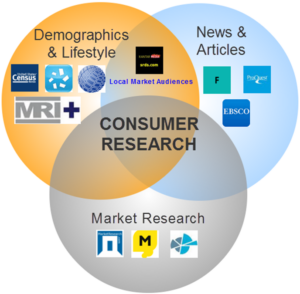SIX STEPS CONSUMER RESEARCH PROCESS

Marketers require information about the characteristic, needs, wants and desires of their target markets. To undertake marketing effectively, businesses need information. Consumer research helps in collecting and analysing information about customer wants, market demand, competitors, distribution channels etc.
Consumer research is often needed to ensure that the companies produce what customers want and not what the companies think. Consumer research is that part of market research where the preferences, perception, habits, motivations, and buying behavior of the targeted customer are identified. It may identify through direct observation, mail surveys, telephone or face to face interviews, and from published sources. Consumer research is the activities performed to gathering the information about consumers’ needs and preferences, especially in relation to a particular product or service. It is based on consumer habits and uses, attitudes, retention, and new product acceptance which help the marketer to understand the consumer and to improve marketing strategies.
General consumer research survey measures the frequency of product use, situation use, experiential use, and use satisfaction. New product market acceptance analysis measures include product specification, elimination of unacceptable features and levels, evaluation of feature level acceptability, and feature importance and validation with full profile choice sets. General measures of a consumer retention survey include trust, loyalty, and retention measures.
Consumer research analysis helps marketing research professionals determine the wants and needs of their consumers. Once these desires are known, companies can develop marketing strategies to meet the consumer’s wants and needs. Companies that meet the needs of their consumers can usually expect greater sales and profits.
Consumer research is an important part of any company. Large corporations know how valuable information is gained and how that can be utilized so it allocates large budgets to consumer research. Even a small corporation location business could benefit tremendously by asking feedback of its customers. Consumer research helps companies improve their products and generate new ideas based on consumer demand.

MARKETING RESEARCH VS. MARKET RESEARCH
These terms often are used interchangeably, but to be precise there is a difference. Market research deals specifically with the gathering of information about a market’s size and trends. Marketing research covers a wider range of activities. While it may involve market research, marketing research is a more general systematic process that can be applied to a variety of marketing problems.
SIX STEPS CONSUMER RESEARCH PROCESS
We are depicting the consumer research process in six steps:
- Problem identification, and formulation;
- Create the research design;
- Selecting the sample;
- Data collection and analysis;
- Preparation of the report;
- Follow-up.

PROBLEM OR OPPORTUNITY IDENTIFICATION
The research process initiates with the recognition of a business problem or opportunity. Problem/opportunity emerges when environment changes. Example, new legal policy. The decision problem faced by management must be transformed into a market research problem in the form of questions that define the information that is required to take the decision and how this information can be obtained. For example, a decision problem may be whether to launch a new product. The corresponding research problem might be to assess whether the market accept the new product.

CREATING THE RESEARCH DESIGN
Research design is a plan that researchers follow to answer the research objectives and/or test the hypotheses. There are three main categories of conducting marketing research, viz.
- Exploratory research
- Descriptive research
- Causal research
These classifications are made according to the objective of the research. Exploratory research has the goal of formulating problems more precisely, clarifying concepts, gathering explanations, gaining insight, eliminating impractical ideas, and forming hypotheses.
The design may be descriptive and/or causal. Descriptive design seeks to describe users of a product, determine the proportion of the population that uses a product, or predict future demand for a product. It answers the questions who, what, when, and how. For example, 35% of the respondents said they like classical music. Causal design examines whether one variable causes or determine the value of another variable (two variables at least). It seeks to find cause and affect relationships between variables. It accomplishes this goal through laboratory and field experiments.

SELECTING THE SAMPLE
Sample is a division of the whole population. Sampling may be opted usually when population is too big, population unknown or there are insufficient resources to conduct a census. However, the sample should be representative and should help the researchers to draw conclusions about the population,

DATA COLLECTION AND ANALYSIS
The questionnaire is an important tool for data collection.
Only a well-constructed questionnaire can collect the relevant data. Poorly constructed questions can result in large errors and invalidate the research data, so significant effort should be put into the questionnaire design. The questionnaire should be tested thoroughly prior to conducting the survey. Data analysis is a process that interprets the observed data into meaningful information. Before analysis can be performed, raw data must be transformed into an appropriate format.
First, it must be edited so that errors be corrected or omitted. The data must then be coded; this procedure converts the raw data into numbers or symbols. Finally, the data is tabulated to count the lumber of samples falling into various categories. Simple tabulations and Cross tabulations, are used for the purpose.

PREPARATION OF THE REPORT
Researcher should communicate their findings to the managers. Oral presentation and written report should both be made. Recommendations should be suggested to the managers. For example: If our shop will target on younger consumers, we should sell more pop music, and the interior design should be more fashionable to fit their lifestyles. The format of the marketing research report varies with the needs of the organization.

FOLLOW UP
As huge resources have been spent in conducting the research; it should be ensured that the managers would use the findings to bring the required changes. Sometimes, additional research should be conducted to supplement the research findings.